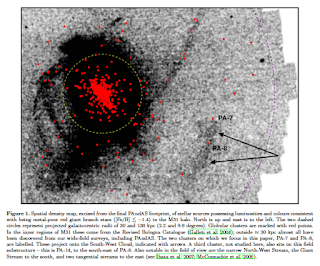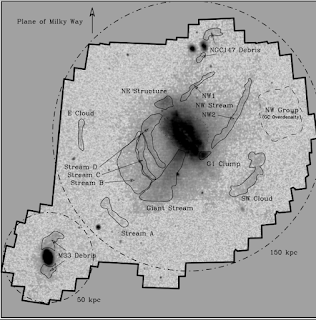Young accreted globular clusters in the outer halo of M31

Due to the Twilight Zone between Christmas and New Year, I am losing the catch-up game, but have just spent a rather wonderful couple of days up at Barrington Tops , camping in the wilderness and being "off the grid"; while I love camping, being off the grid is a rare situation for me. But that's not the story. It's time to look at something I have written about before, and that is where did the globular clusters we see orbiting the Andromeda Galaxy come from? And as you might guess, this is another result drawn from the Pan-Andromeda Archaeological Survey (PAndAS). This work is led by Dougal Mackey who is now at The Mount Stromlo Observatory in Canberra. Now, there are lots of globulars in Andromeda, most of them found close to the galaxy that is plain to see. What we have been doing in PAndAS is looking for the distant globulars, those far out in the faint stellar halo of the galaxy. Here's a picture from the paper The underlying grey-scale is the den


